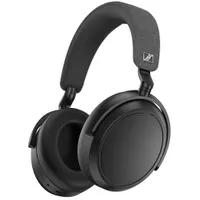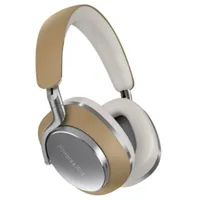TechRadar Verdict
The Bose QuietComfort Ultra Headphones are not cheap, but from the moment you start using them, they feel worth every penny. The sound quality is electrifying, and the noise cancellation swallows you into a black hole of silence. They're also comfortable and come with great extra features, including a reasonable stab at spatial audio from their Immersive Modes. It's just a shame about the sub-par battery life.
Pros
- +
Fantastic, detailed sound with rich bass
- +
Class-leading noise-stopping power
- +
Comfortable and premium, with folding design
- +
Great smart features
Cons
- -
24-hour battery life is weak
- -
Some will prefer a more neutral sound
- -
No USB-C audio input
- -
No LE Audio support (but it's promised)
Why you can trust TechRadar
Bose QuietComfort Ultra Headphones: Two-minute review
The Bose QuietComfort Ultra Headphones are my favorite cans released in the past year, and are an absolutely thrilling listen that also set a new standard when it comes to active noise cancellation. See, maybe I didn't even need two minutes to help you make your decision about them.
Of course, you've probably already noticed that the Bose QuietComfort Ultra Headphones achieve this by being more expensive than most of the best noise-cancelling headphones, so that complicates things – though I think they more than earn this price tag.
Things are also complicated by their short battery life, which is really noticeable compared to the 30 hours minimum we expect from the best wireless headphones these days. 24 hours doesn't sound terrible, but the difference has really jumped out to me compared to Sony headphones with 30 hours of battery.
It's also a bit of a shame they don't match some of the other more elite options by including USB-C audio support or next-gen Bluetooth (at the time of writing), though they do have aptX for higher-quality wireless streaming.
But that doesn't matter. It's only the battery life that's pulled them down from a full five-star rating, because they sound so full, and exciting, and rich – while simultaneously clamping down on outside sound. When you throw in the bonus of effective spatial audio modes among other useful smart features, it feels like a package that's well worth the price.
They've replaced the AirPods Max as my high-end headphones of choice, though if you want something that offers a lot of the same features as these for a lower price (and with a 60-hour battery life), look to the Sennheiser Momentum 4 Wireless. But if you want the ultimate balance of sound quality and noise cancellation, pay for these.
Bose QuietComfort Ultra Headphones review: Price & release date
- $429 / £449 / AU$649
- Released in early October 2023
- Priced higher than Sony and Sennheiser's best
The QuietComfort Ultra Headphones are the most expensive option in Bose's range, adding a significant premium over the $349 / £350 / AU$549 for the non-Ultra Bose QuietComfort Headphones released at roughly the same time – and which are already available for a significant discount compared to that MSRP.
Sign up for breaking news, reviews, opinion, top tech deals, and more.
The price pulls them more into line with the AirPods Max or Bang & Olufsen BeoPlay HX, and a clear level beyond the likes of the Sony WH-1000XM5, which are obviously a major competitor.
However, I should note that in the UK, the price has consistently been £399 since November, and in Australia we've seen them as low for as low as AU$550 outside of sales season, so that now seems to be the standard kind of price in those countries, which helps.
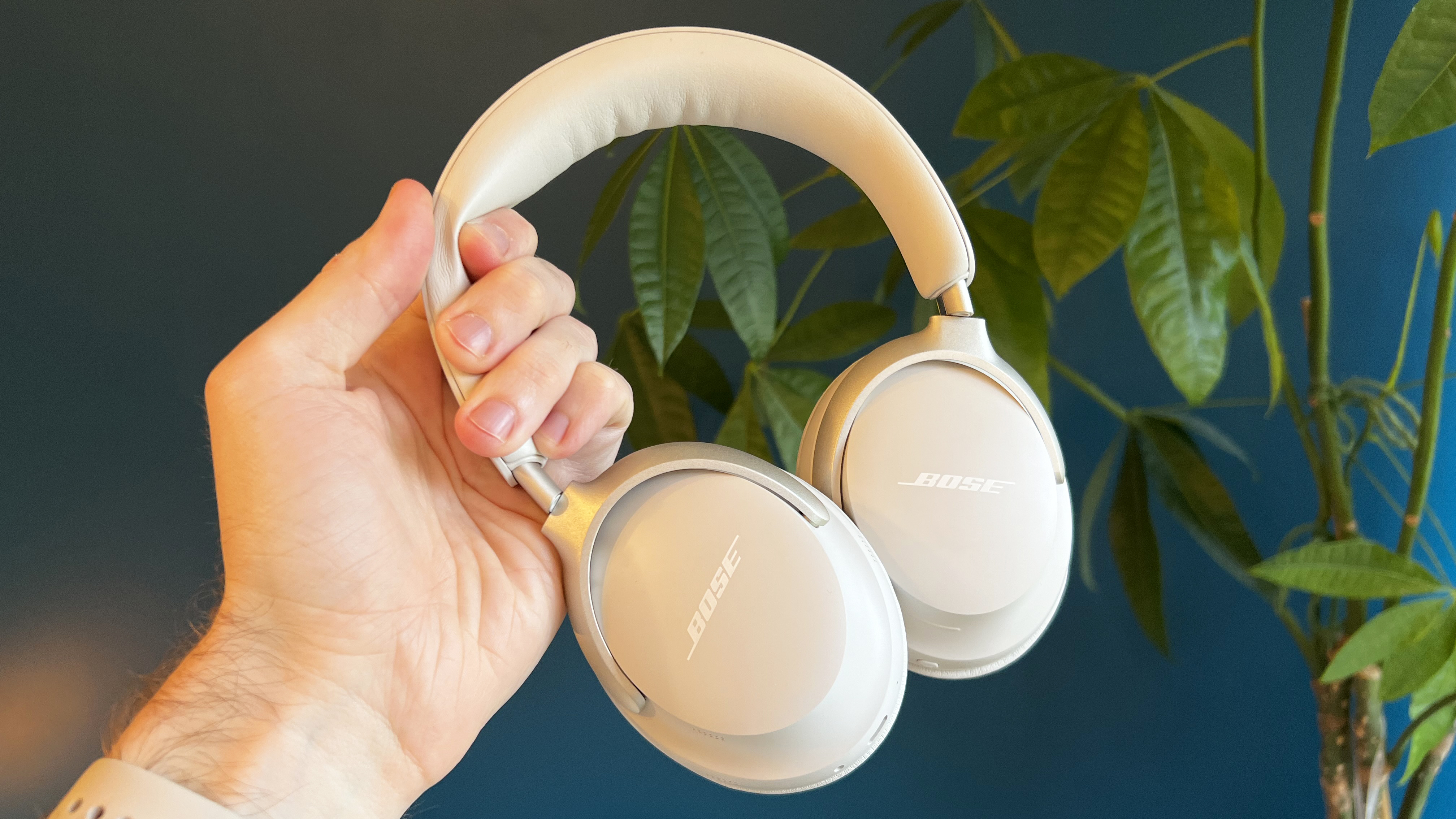
Bose QuietComfort Ultra Headphones review: Specs
| Drivers | 35mm |
| Active noise cancellation | Yes |
| Battery life | 24 hours (ANC on) |
| Weight | 0.6 lb / 250g |
| Connectivity | Bluetooth 5.3, Snapdragon Sound, 2.5mm audio jack, USB-C for charging |
| Frequency range | Not listed |
| Waterproofing | Not rated |
| Other features | Immersive Audio spatial audio, Bose Music app support, wear detection, multi-point connectivity |
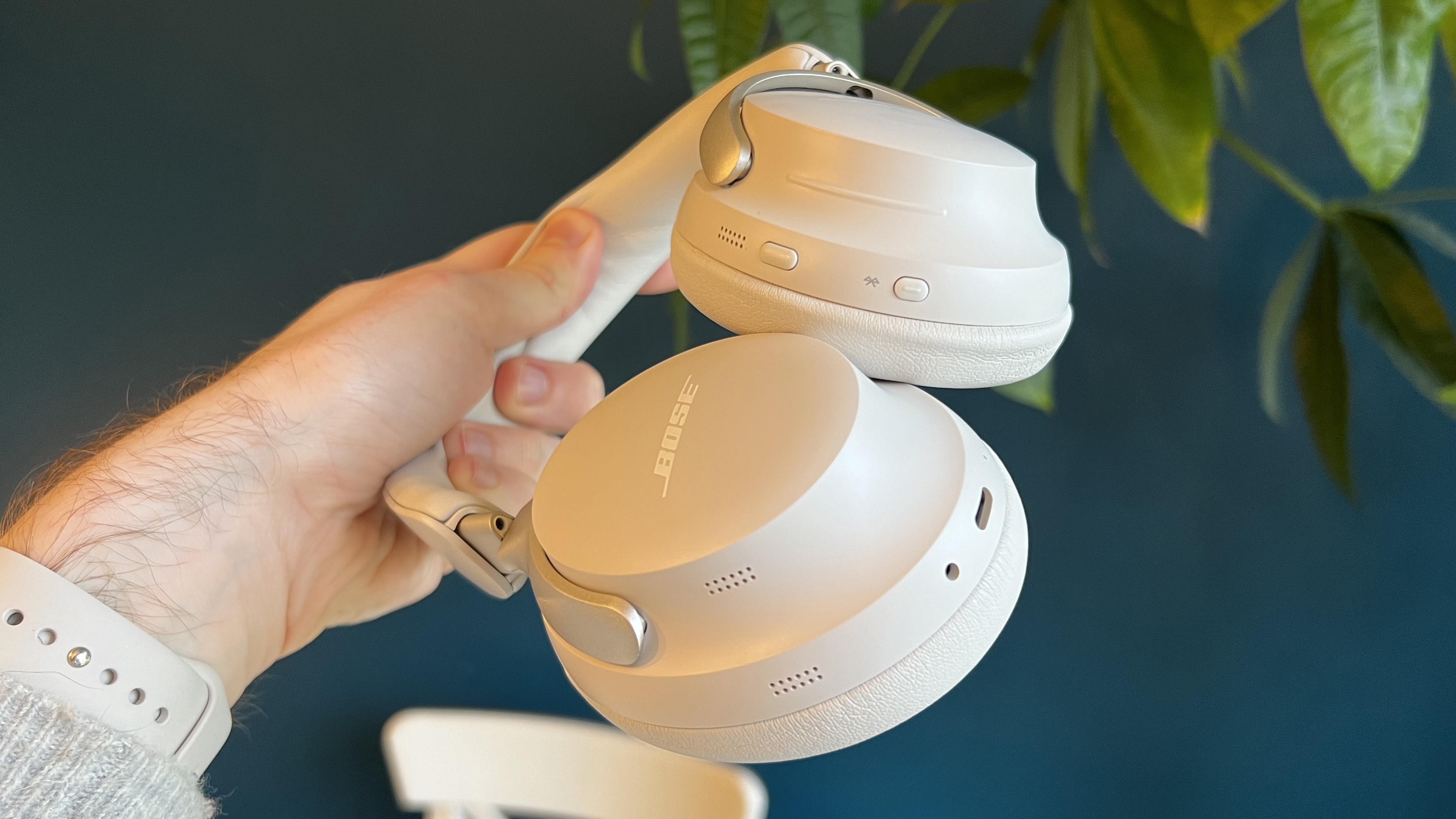
Bose QuietComfort Ultra Headphones review: Features
- Immersive Audio creates spatial sound from any source
- Bose Music app provides lots of control option
- Great connectivity options overall, including multi-point Bluetooth
The Bose QuietComfort Ultra Headphones are the most feature-packed cans from Bose yet, bringing two of the hottest bits of tech in headphones at the moment: multi-point Bluetooth and spatial audio.
Multi-point Bluetooth isn't a surprise given how many of the best wireless headphones feature this ability to connect to two devices simultaneously and switch seamless between them, but it's a first for Bose, and it's something we consider a must-have for premium headphones these days (it's notable and frustrating that the cheaper Bose QuietComfort Headphones lack this). You may have to turn this on in the Bose Music app, in the Source screen.
Spatial audio is handled by Bose's own special sauce, and is called Immersive Audio. Much like on AirPods Max, you can turn it off, you can set it so that sound is coming from a bubble around you that moves with your head, or you can have it so that the orientation of sound is locked and when you turn your head it's like you're doing so in a room full of speakers. If you'll use it, we recommend the first Immersive option for music, and the second for movies, since the latter is more like a home theater setup.
Bose also adds tech called CustomTune here, which adapts to both the shape of your ears as well as the environment to make sure you're always hearing the sound accurately, in theory.
And speaking of adjusting to the environment, there's active noise cancellation that's Bose's most advanced so far, and it's pleasingly customizable. It comes with Quiet Mode (normal noise cancelling), Aware Mode (that lets in outside sounds) and Immersion Mode (which puts ANC on full and activates Spatial Audio). But you can also create your own modes – go to the Modes screen in the Bose Music app and tap the + to do this. You can choose a use-case, and then adjust the noise cancellation level in 10 increments, choose the Wind Block feature to reduce wind noise (which also turns ANC to full if you activate it), and choose whether to active Immersive Audio or not, and if so with what kind of head tracking. When you've made custom modes, you can switch between them using a button on the headphones, so it's easy to move from your custom commute mode with full ANC and no Immersive Audio to your office mode with 60% ANC power and Immersive turned on.
Elsewhere in the app, you can adjust a three-band EQ, disconnect from paired devices in the Source screen, and decide a use for the secret Shortcut button on the headphones. There's a touch strip on the right earcup for adjusting volume, and if you turn Shortcut on, pressing and holding this will act as a third button. You can use it to switch the type of Immersive Audio, activate a voice assistant, tell you the battery level, or use it to activate Spotify and resume where you left of, or switch straight to your Discover station. I hope Bose will add more options in the future, but these are a good start.
In terms of wireless connectivity, you've got Bluetooth 5.3 – with support for SBC and AAC codecs, though not Bluetooth LE Audio and the LC3 codec yet, though Bose says it will come at some point – and Snapdragon Sound. This is a form of aptX Adaptive that works with phones with Snapdragon Sound in, but not with most aptX devices, which is frustrating. But if you've got the right kind of phone, at least it's there for you. Everyone else will have to hope for higher-quality streaming from LE Audio in the future.
You've got a 2.5mm jack for a wired connection, and it comes with a 2.5mm-to-3.5mm cable in the box (along with a nice protective case). There's also a USB-C connection, but unlike the Sennheiser Momentum 4 Wireless or Shure Aonic 50 Gen 2, this can't be used for wired Hi-Res Audio from a phone or laptop – it's just for charging. A shame, considering the price of these headphones, but not a dealbreaker.
Bose says that these have a "revolutionary mic system" for clarity on calls, and while it's definitely good for a pair of cans without a boom mic, I would not call it revolutionary. Using them, you sound generally clear if a tad quiet, and occasionally a little digitally enhanced. It was good enough, but a real mic close to the mouth is still way, way better. They have a 'Self Voice' feature to hear yourself on calls, and overcome the weird 'I sound like I'm locked in a box' feeling of talking on the phone with headphones on. You can turn this off if you prefer.
The battery life is perhaps the biggest flaw here: 24 hours with ANC on, and 18 hours with Immersive Audio on, is meager. You get a middle-of-the-road 30 hours from the Sony WH-1000XM5 and an excellent 60 hours from the Sennheiser Momentum 4 Wireless. And compared to using a pair of Sony cans regularly, I really noticed how quickly these were running down in comparison; Bose's estimate appears to be accurate, and it makes a difference. It's the single thing that held them back from a full five stars, to be blunt about it.
There a few things to mitigate this, though. They have a prompt auto-pause feature when you remove them from your ears, and an auto-off feature if left turned on but unused, though this was set to 24 hours by default, and that eats a ton of battery over that 24 hours. In the Bose Music app, I switched this to 20 minutes, and that's working great for me, especially since they turn on and connect very promptly. They also charge quickly, including a 15-minute juice-up for two hours of use.
- Features score: 4/5
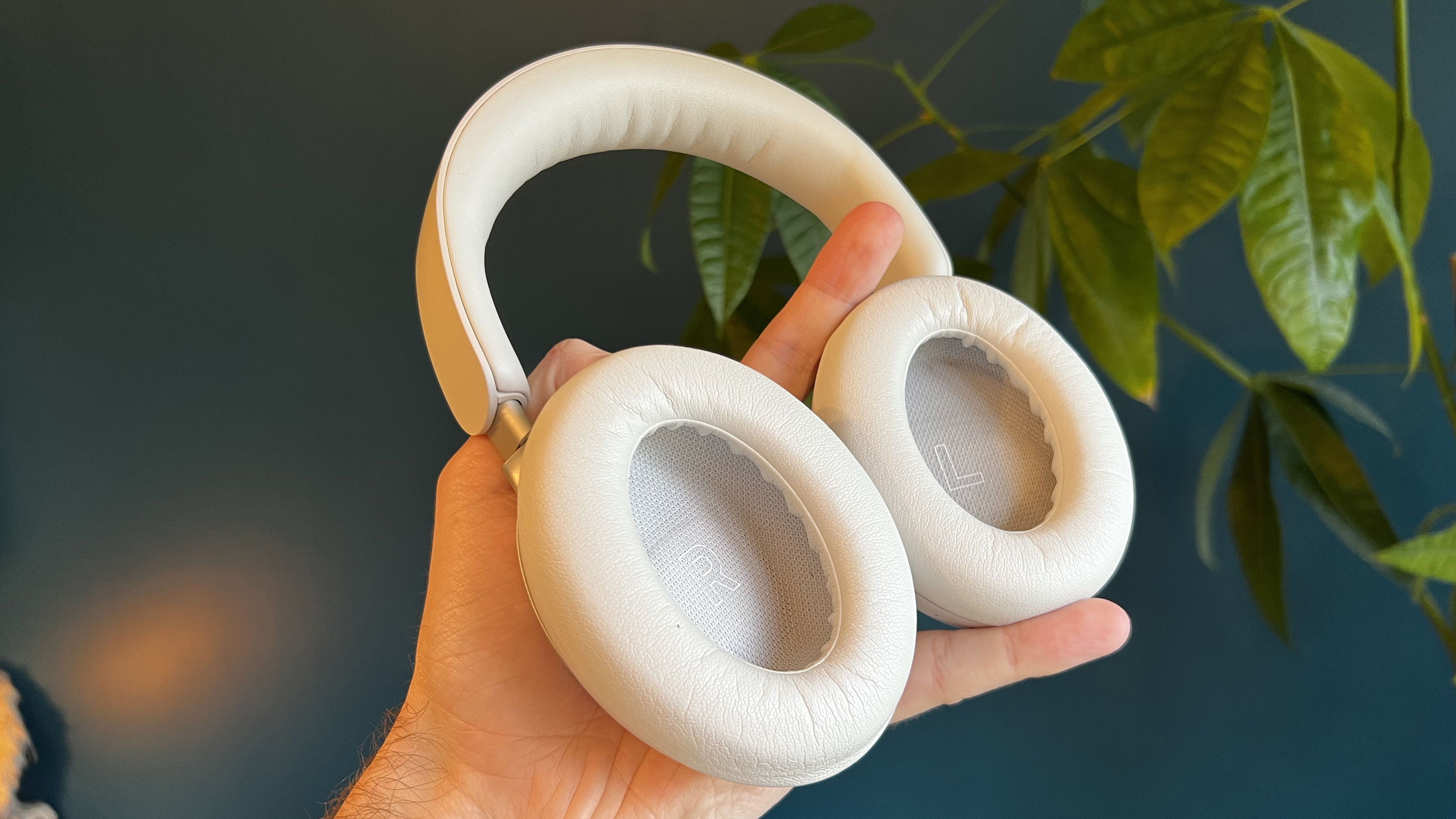
Bose QuietComfort Ultra Headphones review: Sound quality
- Stunning detailed and powerful sound balanced perfectly
- The ANC is the best-in-class, no question
- Immersive Audio does its job, but adds some effects
Bose doesn't really mention this in the QuietComfort Ultra Headphones' specs, but they use a pair of angled drivers in the earcups. We've seen this concept before on the Bowers & Wilkins Px8, and the idea is that, while most headphones have drivers installed flat inside the earcups, this isn't ideal for perfect audio. Your head is not square (er, probably), and earcups don't sit directly flat on your skull, which means in most headphones, the drivers aren't parallel to your ear canals. One side of the driver is closer, which means its sound reaches you marginally faster. So the speakers in the Ultra (and the Px8) are angled in the earcup, so when they're on the head they're parallel to your ears (or as close to it as possible). This should mean improved timing, and the best possible detail, because all the air is reaching you in a balanced manner.
I mention all this for some context, because these things absolutely freaking rule. They deliver some of the most alive, exciting, textured, finely resolved, deeply engaging music I've ever heard from a pair of wireless headphones. It's the kind of sound I would expect to pay 50% or even twice as much for – and I'd begrudgingly accept that it's worth it. The Bose QuietComfort Ultra Headphones may not be cheap, but on the music quality alone, I think they're a great deal.
You will probably notice the bass first. Put on anything with some low-end chops, and you'll notice yourself sinking into its depths immediately, but with a firm and controlled floor. It can punch deep down and pull straight back up with precision, and never feel like it's overplayed its hand.
It's helped by just how rich and layered the mids are. Bass is free to go for a walk because it doesn't drag the mid-range with it – voices hover comfortably and naturally, instruments stay separated but part of a whole, fine detail is clear from everywhere. And the treble is shimmering and lofty without ever getting harsh or detached.
The dynamism within the Ultra Headphones' range is just astounding. They can go from nothing to rocketing through sounds like a firework that's just sparked up. Their timing is so strong and they're so responsive that this aspect alone can really spoil other headphones, making them feel like they're moving with weights attached in comparison.
And they sound like this with active noise cancellation on, over AAC on Bluetooth! Several companies (including Apple) say that most headphones don't even reveal the detail possible in standard wireless sound and that hi-res isn't really necessary for a lot of people. We've always championed that people should have the higher-quality option available to them, at least… but I can certainly feel some truth of this argument when I'm using these headphones.
Like the sound, the active noise cancellation is mind blowing. It's absolutely best in class, there's no question. I've never heard busy cities become as quiet as when I'm walking with these on, it's truly next-level stuff.
I have found them to have an odd processing issue with some extremely loud sounds – during a plane take-off, an especially loud bus struggling to get up a hill, and on an extremely windy day, for instance. In these cases, when the noise reached its apex, the headphones' sound became blocky and loud, too. It was brief, so I don't find it to be a dealbreaker, but the fact remains. Bose may be able to fix this with an update, who knows.
The Immersive Audio option does well at its fundamental job of making it feel more like the sound is coming from speakers around you, rather than being pumped straight into your ears. The head tracking works very well, and never felt lagged or detached from my head movements, either. But while it's pleasant for both music and movies, ultimately, I didn't find it very additive, partly because it turns out to be a trade-off.
The immersion and positioning of sounds is done based on processing stereo sound, which is a bit different to the spatial audio you get from Apple's AirPods, where it's based on Dolby Atmos 3D sound systems (when possible). And, as someone who's used AirPods Max and AirPods Pro 2 a lot, it didn't have the same convincing recreation of a theater system as you get from those headphones. Again, this isn't really a problem, and I still liked having it on for watching a movie on a plane because it did still create the feeling of the sound coming from outside of the earcups.
But it also adds some effects, including a sense of reverb for some upper-mid or treble sounds. It makes the sound feel less sweet, so for music I never got on with it. I'll still use it for watching movies on flights, however.
- Sound quality score: 5/5
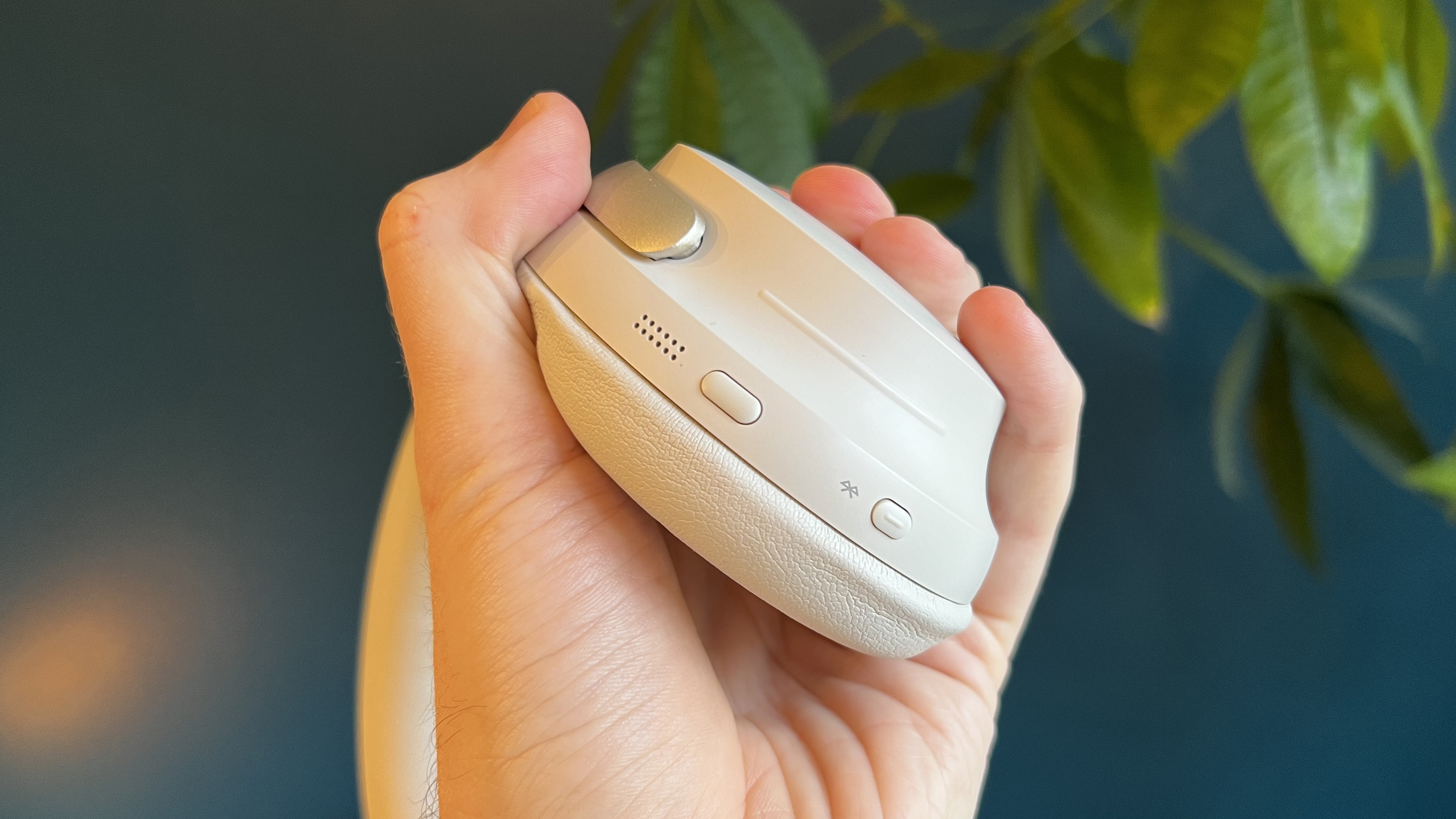
Bose QuietComfort Ultra Headphones review: Design
- Very premium plastic and faux leather finish
- Folding design is great for travel
- Physical and touch-based controls
The QuietComfort Ultra Headphones are as comfortable and premium-feeling as you'd expect for the money. The plastic earcups and headband top have a great soft-touch matte finish, and are connected to the headband by solid aluminum hinges. Protein- and plastic-based faux leather are used for the headband's underside and the earpads, and they're very comfortable and soft to wear.
The earcups fold into the headphones, so they can get smaller for journeying, and they come with a nice hard case, which has a USB-C-to-A charging cable and the audio jack cable inside the box. They're definitely some of the best headphones for travel, thanks to this combined with their active noise cancellation might.
On the right earcup are the controls, which include one button that turns them on and off, and controls pairing mode, and does play/pause/skip tracks. A second button switches between different listening modes – it cycles through whatever you have set in the Modes screen, so if you've added custom ones, it includes that. Next to these buttons is a touch-sensitive strip that controls volume, and holding on it is the 'Shortcut' button. These all work well.
On the left earcup is the USB-C port and the 2.5mm jack, plus a charging light.
I can only find one minor gripe with the fit, and that's the fact that if you put them around your neck and rotate the earcups to lie flat, they rotate so the open side is up, rather than facing down towards your body. I prefer the other way around. Hardly a major issue.
- Design score: 5/5
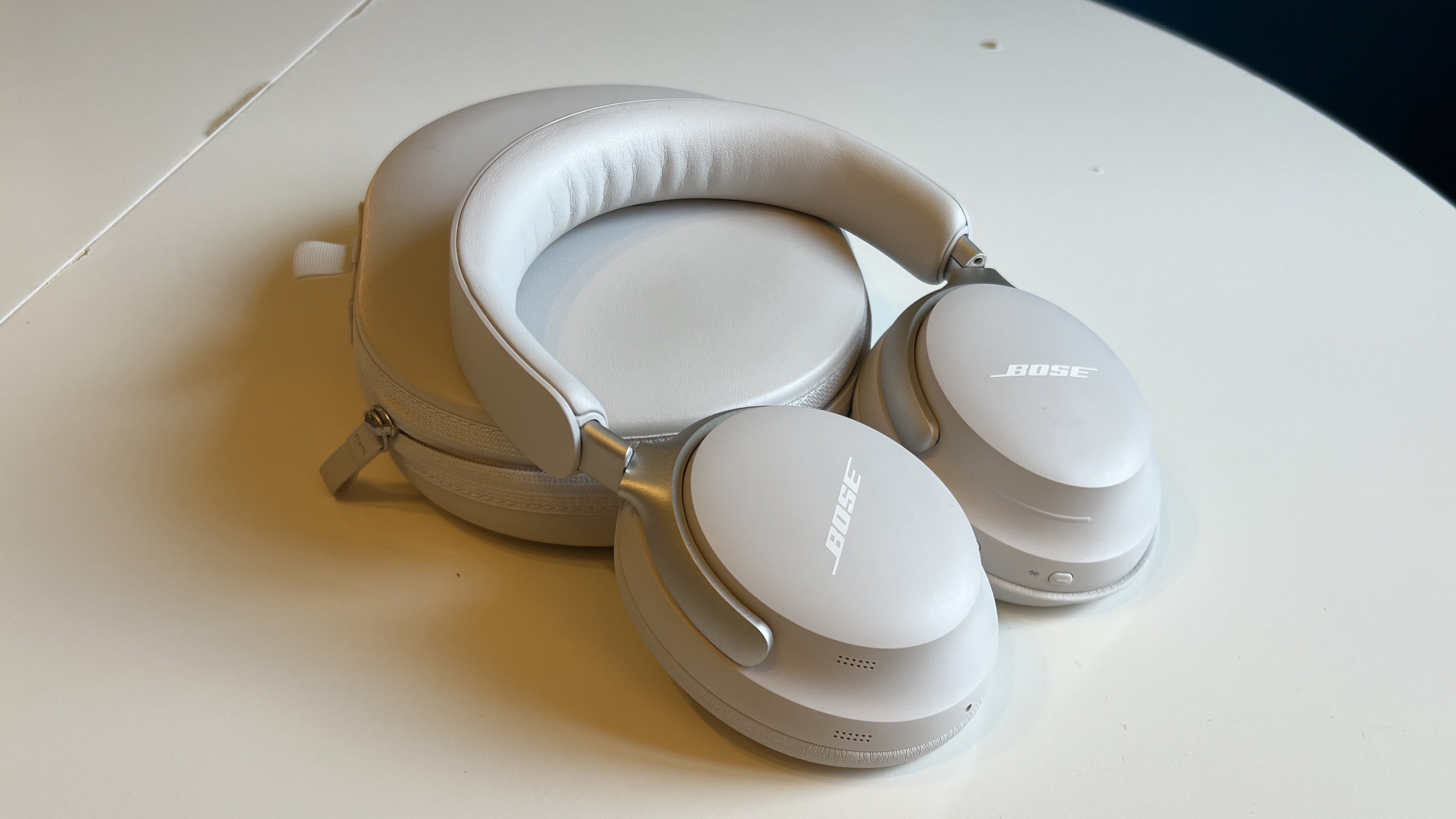
Bose QuietComfort Ultra Headphones review: Value
- Expensive, but easily worth it overall
- A clear step from the non-Ultra QuietComfort Headphones
- Lack of other hi-res support is a shame
While any pair of headphones that costs this much is going to be hard to describe as the bargain of the century, I still think the Bose QuietComfort Ultra Headphones are actively good value considering just how strong their active noise cancellation and audio quality is. They're not a little better than the likes of the Sony WH-1000XM5; they're clearly and obviously better. They're slightly better than the AirPods Max, and those are much more expensive than the Bose.
And they tick almost all the feature boxes, too, so they feel like a great investment from the smart side of things – though they are beaten in smarts by the location-based cleverness of the Sennheiser Momentum 4 Wireless or Sony headphones.
Where they obviously fall short is a lack of full aptX or LDAC support for wider wireless CD-quality sound, or USB-C audio support for hi-res digital wired audio. Other premium options have this, it should really be here – but not everyone will mind. I don't, really.
The battery is the clear lacking element, since less expensive headphones with the same kind of features are able to not just beat these, but to absolutely embarrass them in the case of the Sennheiser Momentum 4 Wireless.
But I'm living with that. It's a small frustration, it's not a dealbreaker. I still think they're well worth the price tag.
- Value score: 4/5
Should I buy the Bose QuietComfort Ultra Headphones?
| Section | Notes | Score |
|---|---|---|
| Features | Great app and strong features overall, but limited hi-res support and weak battery life. | 4/5 |
| Sound quality | The best ANC you can get, and incredibly energetic, detailed, precise and rich audio. | 5/5 |
| Design | Very comfortable, with a premium feel, and good earcup controls. | 5/5 |
| Value | Easily worth the price, despite the small feature shortcomings. | 4/5 |
Buy them if...
You want the world's best noise cancellation
Nothing quiets the outside world like these – and as a further bonus you can also customize the ANC in smart ways.
You want to take your sound up a notch
The depth of sound and energy of these headphones is like a good pair of open-ear wired headphones, but with all the advantages of ANC and wireless tech.
You value comfort and portability
They're light, they're comfortable for long periods, and they fold for travel, even with all their powerful tech.
Don't buy them if...
You have big hi-res audio ambitions
Obviously, you can connect them wired for high-quality audio, but if it's aptX or USB digital Hi-Res Audio certification you're after, the QuietComfort Ultra are not what you need. It's Snapdragon Sound or 3.5mm cable only.
You want a long battery life
24 hours is a far, far cry from the 60 hours of the Sennheiser Momentum 4 Wireless.
You're expecting a new level of spatial audio
The spatial audio works; it does the job of removing the sound from being right outside your ears. But it comes with caveats, and I think Apple does it better.
Bose QuietComfort Ultra Headphones review: Also consider
| Bose QuietComfort Ultra Headphones | Sennheiser Momentum 4 Wireless | Bowers & Wilkins Px8 | |
|---|---|---|---|
| Price | $429 / £449 / AU$649 | $349.95 / £300 / AU$549 | $699 / £599 / AU$1150 |
| Drivers | 35mm | 40mm | 40mm |
| Active noise cancellation | Yes | Yes | Yes |
| Quoted battery life | 24 hours (ANC on) | 60 hours (ANC on) | 30 hours (ANC on) |
| Weight | 0.6 lb / 250g | 0.65 lb / 293g | 0.7 lb / 320g |
| Connectivity | Bluetooth 5.3, Snapdragon Sound, 2.5mm audio jack, USB-C for charging | Bluetooth 5.2, aptX Adaptive, 3.5mm jack, USB-C | Bluetooth 5.2, aptX Adaptive, USB-C |
| Frequency range | Not listed | 6Hz - 22kHz | Not listed |
| Waterproofing | Not rated | Not rated | Not rated |
| Other features | Immersive Audio spatial audio, Bose Music app support, wear detection, multi-point connectivity | Sennheiser app support, USB-C audio, multi-point connectivity | B&W Music app support, multi-point connectivity, USB-C audio |
Sennheiser Momentum 4 Wireless
These offer basically all the things that the Bose lack, including aptX and USB-C audio support, and a huge 60-hour battery life. We love them, they're fantastic – but the Bose will take sound and cancellation up a level compared to them. But the Sennheisers are much cheaper. Here's our full Sennheiser Momentum 4 Wireless review.
Bowers & Wilkins Px8
Go even more premium with these phenomenal-sounding and beautifully designed headphones. The look and feel is even nicer (less plastic), the sound is class leading – but the ANC is nowhere near what Bose can do. The battery life is longer, though… Here's our full Bowers & Wilkins Px8 review.
How I tested the Bose QuietComfort Ultra Headphones

- Tested over three months
- Used mainly with an iPhone and MacBook Air
- Tested in real-world office, city and travel situations
I've been using the Bose QuietComfort Ultra Headphones since their launch, taking the time to test them in as many different situations as possible. I've used them in the TechRadar offices, at home, and travelling on buses, trains and planes, to really get a sense of their real-world performance. They've been my primary over-ear headphones during that time.
I've been compared them directly to headphones including the Bose QuietComfort Headphones, Bose Noise Cancelling Headphones 700, Apple AirPods Max, Sennheiser Momentum 4 Wireless, and Sennheiser HD600.
In day-to-day use, I mainly used them with my iPhone to listen to Apple Music tracks, but I used them with an iPad Pro for watching videos from various streaming services, and to test the multi-point connectivity. I've also used them with audio from various other sources, including Spotify, podcasts and YouTube. For wired use, I connected them to my MacBook Air.
- First reviewed: January 2024

Matt is TechRadar's Managing Editor for Entertainment, meaning he's in charge of persuading our team of writers and reviewers to watch the latest TV shows and movies on gorgeous TVs and listen to fantastic speakers and headphones. It's a tough task, as you can imagine. Matt has over a decade of experience in tech publishing, and previously ran the TV & audio coverage for our colleagues at T3.com, and before that he edited T3 magazine. During his career, he's also contributed to places as varied as Creative Bloq, PC Gamer, PetsRadar, MacLife, and Edge. TV and movie nerdism is his speciality, and he goes to the cinema three times a week. He's always happy to explain the virtues of Dolby Vision over a drink, but he might need to use props, like he's explaining the offside rule.

